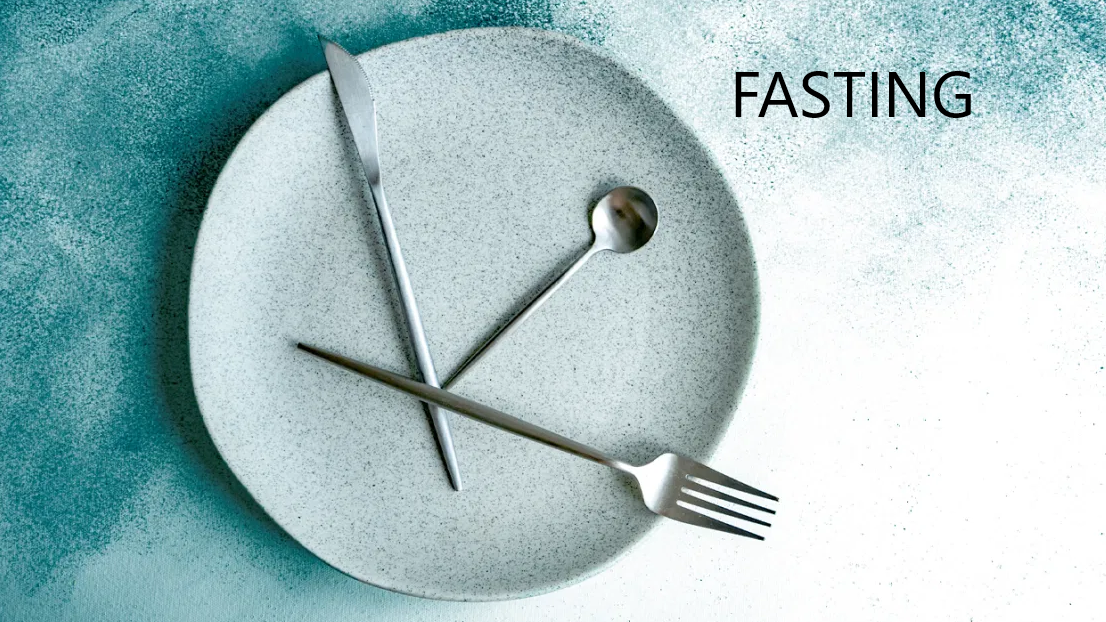Fasting is the practice of abstaining from food or drink for a specific period. While there are several types of fasting, the most common form is intermittent fasting, in which people limit their food intake to a particular time window each day.
Regarding calorie burn, fasting alone does not directly burn calories. However, it can indirectly lead to calorie burn by creating a deficit. If a person is in a calorie deficit (i.e., consuming fewer calories than they burn), their body will start burning stored fat for energy.

The number of calories burned during a 16-hour fast will vary depending on body weight, age, sex, and metabolic rate. Estimating the exact number of calories burned during fasting is problematic because it depends on how the body responds to the fasting period.
However, some studies suggest intermittent fasting can increase the body’s metabolic rate by up to 14%, leading to increased calorie burn. This increase in metabolic rate is thought to be due to changes in hormone levels during fasting.
It’s important to note that fasting should be done safely and under the guidance of a healthcare professional. Maintaining a balanced approach to nutrition and exercise is also crucial to support overall health and wellness.
How Many Calories Does Fasting Burn?
Usually, a 176-pound man (80 kg) can burn 2400 calories in 24 hours. Therefore, 14 hours of fasting can burn 1400 calories. Additionally, 16 hours of fasting can burn 1600 calories.
Several factors can influence the impact of fasting on the amount of calories burned. Here are some key factors that can affect the calories burned during fasting:
- Basal Metabolic Rate (BMR): BMR refers to the calories your body needs to perform essential functions at rest. Fasting for short periods may not significantly affect your BMR. However, prolonged fasting or severe calorie restriction can lower your BMR, reducing the number of calories burned.
- Activity Level: Your activity level can influence the calories burned during fasting. Physical activity, such as exercise or routine daily tasks, can increase overall calorie expenditure. Engaging in physical activity while fasting may result in higher calorie burning than fasting without physical activity.
- Muscle Mass: Muscle mass plays a role in determining the number of calories burned at rest. More muscle mass generally leads to a higher metabolic rate and increased calorie burning. Conversely, losing muscle mass due to inadequate protein intake or prolonged fasting can lower the overall calories burned during fasting.
- Duration of Fasting: The duration of fasting can impact the calories burned. Short-term fasting (up to 24 hours) may not significantly affect overall calorie burning. In contrast, longer-term fasting or prolonged calorie restriction can lower metabolic rates and reduce burned calories.
- Individual Differences: Each individual may have unique metabolic characteristics and responses to fasting. Genetics, age, gender, and overall health can influence how the body responds to fasting and the number of calories burned.
It’s important to note that while fasting can lead to an increased calorie deficit, which may promote weight loss, it should be approached with caution and under proper guidance. Severe or prolonged fasting can have negative impacts on overall health and well-being. Therefore, consulting with a healthcare professional or a registered dietitian before starting any fasting regimen is recommended.
As mentioned earlier, fasting alone does not directly burn calories. However, if a person is in a calorie deficit, their body will start burning stored fat for energy, which can lead to weight loss.
To estimate the potential calorie burn during a 16-hour fast, we can calculate the daily energy expenditure (DEE) of a man weighing 80 kg with an average metabolic rate. The DEE is the amount of energy (calories) a person burns in a day, taking into account their basal metabolic rate (BMR) and physical activity level (PAL).
Assuming a BMR of 1800 calories per day and a PAL of 1.5 (meaning the person engages in light physical activity throughout the day), the estimated DEE for an 80 kg man would be around 2700 calories per day.
If this man were to fast for 16 hours, his potential calorie intake during the remaining 8-hour eating window would need to be limited to 2700 calories minus his daily calorie deficit goal (for example, a 500-calorie deficit would result in a daily goal of 2200 calories). This would result in a total calorie deficit for the day, which could lead to weight loss over time.
Fasting Types
During fasting, people typically restrict or limit their calorie intake. However, the foods allowed or recommended vary depending on the fasting type. Here are some standard options for foods that can be consumed during different types of fasting:
- Intermittent Fasting (Time-Restricted Feeding):
- Water: Plain water is typically allowed during fasting periods.
- Black coffee: Unsweetened and without additives like cream or sugar.
- Tea: Unsweetened herbal tea or green tea.
- Non-caloric beverages: Zero-calorie drinks like sparkling water or diet soda.
- Some versions of intermittent fasting may allow for small-calorie allowances during the fasting window, such as consuming a small amount of low-calorie foods like raw vegetables, a small serving of berries, or a small handful of nuts.
- Water Fasting:
- Water: Plain water is the only permissible beverage during water fasting.
- It’s important to note that water fasting is an extreme form of fasting and should only be undertaken under medical supervision.
- Modified Fasting:
- Very low-calorie foods: Certain fasting protocols allow for the consumption of very low-calorie foods, such as specific vegetables (e.g., leafy greens, cucumbers), fruits (e.g., berries), or lean protein sources (e.g., skinless chicken breast, fish) in limited quantities.
- Fasting Mimicking Diet:
- A fasting-mimicking diet is a specific meal plan designed to mimic the effects of fasting while still providing some nutrition. It typically involves consuming low-calorie, plant-based foods like soups, broths, nuts, seeds, vegetables, and small portions of whole grains or legumes.
It’s important to note that the specifics of what can be eaten during fasting may vary depending on individual goals, health conditions, and the guidance of a healthcare professional or registered dietitian. Therefore, it’s always recommended to consult with a healthcare professional before starting any fasting regimen or making significant changes to your diet.
- How Many Tablespoons is One Clove of Garlic? - June 26, 2024
- How to Measure 3/4 Cup When You Don’t Have the Right Measuring Cup? - June 6, 2024
- How Much Does Cooked Pasta Weight Compare To Dry? - April 30, 2024
